Who
Dave Scanlan, General Manager of Eaglecrest, Alaska
Recorded on
February 13, 2023
About Eaglecrest
Click here for a mountain stats overview
Owned by: The City of Juneau
Located in: Juneau, Alaska
Year founded: 1975
Pass affiliations: Indy Pass, Powder Alliance, Freedom Pass
Reciprocal partners:
3 days each at: Anthony Lakes, Diamond Peak, Hilltop, Hogadon Basin, Lookout Pass, Monarch Mountain, Mount Bohemia, Mount Sima, Mount Ashland, Skeetawk, Skiland
1 unguided day at Silverton
Eaglecrest has one of the most extensive reciprocal networks in America. Here’s an overview of everything that’s included in a season pass, which debuted for this season at $576. While there’s a ton of overlap, adding an Indy Pass onto this would give you another 50-plus ski areas:

Closest neighboring ski areas: Eaglecrest’s website reminds us that “There are no roads into Juneau, Alaska— you have to live here, fly, or ferry to experience this powder paradise.” There are no other ski areas nearby. So stay for a few days and enjoy it.
Base elevation: 1,130 feet
Summit elevation: 2,750 feet
Vertical drop: 1,620 feet
Skiable Acres: 640
Average annual snowfall: 350 inches
Trail count: 36 (40% advanced/expert, 40% intermediate, 20% beginner)
Lift count: 4 doubles – Eaglecrest also plans to add a pulse gondola, which will likely be ready for the 2025 summer season and 2025-26 ski season.

Why I interviewed him
This podcast started, as so many of them do, with me asking one question: what is going on here?
Every ski area is different, but some are more different than others. Mount Bohemia, with its complete absence of grooming and snowmaking and $109 season pass. Perfect North, which sits on southern Indiana farmland but processes more than 10,000 skiers on a busy day and employs 1,200 workers in the winter – bigger numbers than some Western alphas. Black Mountain of Maine, which, over the past decade, has undergone the largest expansion of any New England ski area – with zero promotion, masterplanning, or fanfare.
And here’s Eaglecrest. This ski area up in Alaska. But not just regular Alaska. Isolated coastal Alaska. Where roads don’t go. You have to fly or take a ferry. There, for some reason, is where the 49th state chose to locate its capital, Juneau. The state’s residents have voted many times to move the capital. But it remains. It is a gorgeous place, mountains launching dramatically from the water. There are 31,000 people there. And one ski area. Eaglecrest is big enough to stir curiosity, but not big enough to draw skiers in volume from the mainland, who have dozens of larger ski areas to bounce between. It is an Indy Pass member, a Freedom Pass member, a Powder Alliance member. It has a dozen reciprocal partnerships besides. Almost anyone can ski there – almost no one does. So what is this place? This city-owned ski area at the end of civilization? And what does it want to be? And how does it plan to get there?
I had questions. Scanlan had answers. This is a good one.
What we talked about
Fifteen straight days of snow is just how they roll in Southern Alaska; the Pineapple Express; if you think Alaska is all dark and subzero weather, think again; skiing in fishing gear; “we don’t have the big testosterone bro-brah attitude”; is Juneau ski bum paradise?; where a crowd on a Saturday pow day is a dozen early-risers ahead of you in the maze; Midwest pride; bump skiing at Wilmot; when “you fall in love with it not for the hype of a powder day, but for the feeling you get when you’re on your skis or snowboard”; a young vagabond in the ‘90s; Hope Alaska; founding the Mountain Rider’s Alliance to help small ski areas; the potential for resurrecting the long-lost Manitoba Mountain, Alaska; Skeetawk (Hatcher Pass); moving to and running Mt. Abram, Maine; what it’s like to compete with Sunday River; hardcore New England; Maine nice; landing a dream job at Eaglecrest; reworking the primitive snowmaking system; the pros and cons of running a city-owned ski area; whether Eaglecrest could ever survive without city subsidies; massive summer potential; easier to get to than you think: “If you live in Seattle, you can be sitting on the chair at Eaglecrest before most days you could be sitting on the chair at Crystal”; fly and ski free with your boarding pass; pushing back against locals who want to keep the place secret; why Eaglecrest has so many reciprocal partners and how effectively that’s drawing skiers to Alaska; why you saw an Eaglecrest booth at the Snowbound Festival in Boston; Indy Pass; comparing the coming Eaglecrest gondola installation with how the Lone Peak Tram transformed Big Sky in the 1990s; 20,000 daily summer visitors to a town that has 30,000 residents; “how do I take advantage of this amazing opportunity to put the cash in the pocket that I need to turn Eaglecrest into the best ski area in the world?”; why low-capacity lifts will continue to be Eaglecrest’s default; the drive to begin relocating quality used ski lifts from Europe to North America; breaking down Eaglecrest’s soon-to-be-installed fixed-grip pulse gondola; where the gondola’s top, bottom, and midstations will sit; how much larger Eaglecrest’s trail footprint will get; “I do carry some guilt of polarizing our ski community” by putting a lift into what’s now hike-in terrain; why the ski area needs investment to survive; thoughts on the future of the four double chairs; visiting and riding the future Eaglecrest gondola in Europe; massive upgrades for the lift; how the gondola will work with the Mt. Roberts Tram; a gondy timeline; potential for a beginner carpet; and how much the official count of 36 trails undersells the resort’s terrain.
Why I thought that now was a good time for this interview
Eaglecrest is, as noted above, one of the continent’s most aggressive Megapass-Reciprocity players. That makes it an important mountain in an important Storm sub-narrative: how can you ski as much as possible, at as many ski areas as possible, for as little money as possible? While Eaglecrest’s network (50-ish partners), and pass price-point ($576 early-bird for 2022-23) don’t quite drop it into the Ski Cooper realm ($329 early-bird for this season and 61 partner ski areas), it nonetheless acts as a powerful enabling device for skiers with an adventurous bent and a small degree of logistical savvy.
The question, of course, is why Eaglecrest bothers. The place is marooned along the North American coast, one of the few non-island cities unreachable by road from the rest of the landmass. I’m sure some Eaglecrest locals journey south by plane and orchestrate a ski loop through the continental West. But I’m not sure if that’s the point here. Rather, Eaglecrest is trying to get skiers to come to them, to realize that if they hop a plane two-and-a-half hours north, they can land in the Great Unspoiled and have a powder-draped ski area to themselves.
The goal is to create long-term skiers. Tourists, you know. And once they’ve seen what the place is now, they’ll be revved up to return once Eaglecrest runs a new-used pulse gondola from its base to the top of Pittman’s Ridge. That will bring lift service to the ski area’s full 1,620-foot vertical drop for the first time and, more importantly, open hundreds of new acres of terrain skier’s left of the current boundary.
If you’re not familiar with a pulse gondola, you may have seen them at Snowmass or Steamboat – they run with little groups of cabins together, and are typically used in America more as transit lifts than ski lifts (the Snowmass lift mostly takes passengers up the village, and Steamboat’s lift moves skiers up from a cluster of condos down the mountain). These are fixed-grip lifts, but travel at tram speeds – Scanlan estimates the base-to-summit ride at around seven minutes. The lift will travel in three pods of 15-passenger cabins and will have a mid-station, off of which Eaglecrest could eventually build a learning area with carpets, Scanlan tells me. The yellow line here shows where the gondola will run on the mountain - the red lines represent the current lifts:
The lift has been controversial. It’s 34 years old, and operated at Austria’s Galsterberg Ski Area until last April. It cost approximately $2.5 million to purchase and transport, and will cost an additional $5.5 million to install. It will operate at a far lower capacity than a modern detachable gondola, which is what most U.S. ski areas use. Critics say the gondola competes with the private sector – in particular, the Mount Roberts Tramway.
Scanlan addresses each of these points in our conversation, with a nuanced analysis of Juneau’s thumping summer tourism season and how Eaglecrest can both act as a relief valve and boost its own long-term goal of financial independence.

Questions I wish I’d asked
Two points I wanted to discuss that I didn’t get to: how much the gondola will cost, and Eaglecrest’s very low lift ticket prices, which top out at $68. The ski area breaks down the cost in an FAQ on its website:
Q: I’ve heard about a $2 million cost and a $7.5 million cost. Which amount is correct?
$2 million [it ended up being $2.5 million] covers the initial purchase, transportation, and preliminary engineering of the Austrian pulse gondola. The funding ordinance currently under review is for this sum.
$5.5 million covers the cost of installation and additional infrastructure. Eaglecrest may eventually seek this sum as a loan to be paid back by summer operations. This number will be refined in the months ahead as we continue work with the Eaglecrest Board and Eaglecrest Summer Task Force to examine the business case and evaluate future costs.
Why you should ski Eaglecrest
Because this might be it. Survey the West: it’s full. Colorado High Country, the Wasatch, Tahoe, the Seattle and Portland day-drivers, Jackson, Mammoth, Big Sky – it’s traffic or it’s ticket limits or it’s sticker-shock pricing or it’s rivers of people or it’s the raw cost of living and everything else. Or it’s several or all of these factors, blended, to frustrate the romance of mountain-town living.
Not that rustic snowy backwaters don’t remain. But they are backwaters. Places like Turner, Montana, 2,110 vertical feet and 1,000 acres but lodged in the wilderness between Schweitzer and Whitefish. Sunrise Park, Arizona, 1,800 feet of vert and 1,200 acres, but marooned 90 miles from the nearest interstate highway and so dysfunctional that a huge chunk of the mountain sat inaccessible for five years after their monster triple chair broke down (it now takes three lift rides to reach that same terrain).
But look north. Look at this:
If you haven’t watched yet, let me pull one stat: Scanlan says on this video that a busy day at Eaglecrest – a weekend powder day, for instance – might draw 900 skiers. For the day. There’s more people waiting in the average McDonald’s drive-through line than that.
“Yeah Brah but it’s small.”
Watch the video, Brah.
“Yeah but it gets like half the snow of Mt. Tahoe, where my boys ride Brah.”
Watch the video.
“Yeah but it’s in Alaska and I don’t see the point of skiing in Europe when I can ski right here in U.S. America.”
Brah, watch the video.
As mainland Western U.S. skiing boils over, Eaglecrest remains on a low simmer. And while you’ll need an airplane to get there, you land in a state capital, with all the infrastructure and life conveniences that attend such a place. Juneau is a small city – 31,000 people – but an important one, with abundant stable government and industrial fishing jobs. It’s big enough to host a woo-hoo walkable downtown and all the standard American big-box claptrap on the outskirts, small enough that unloading every skier in the valley onto Eaglecrest’s access road won’t be enough to clog the drain. And when you arrive, you just ski. No parking drama. No lines. No Powder Day Death Matches. Just. Ski.
Yes, the lifts are old and slow: four fixed-grip doubles. Yes, accessing the full vert requires some hiking. Yes, coastal snow is not Wasatch snow. And yes, the total skiable acreage does not match your big-mountain Western destinations. But: recalibrate. Reset your expectations. Stripped of the hoards and the Hunger Games mentality they inspire, skiing is something different. A 10-minute lift ride is not so intolerable when you ski right onto the chair. Six hundred forty acres is plenty when it’s mostly ungroomed faces sparsely cut by the local bombers. Three hundred fifty inches is sufficient when it tumbles over the mountain in lake-effect patterns, a few inches every day for weeks at a time, refreshing and resetting the incline day after day.
Eaglecrest is going to get bigger, better, and, probably, busier. That gondola will change how Eaglecrest skis and, eventually, who skis there. It’s not a destination yet, not really. But it could be. And it probably should be – we’re rapidly moving past the era in which it makes sense for city tax dollars to subsidize a ski area. There are plenty of examples of publicly owned ski areas operating at a profit, and Eaglecrest should too. Go there now, before the transformation, to see it, to say you were there, to try that different thing that gets at what you’re probably looking for in the mountains already.
Podcast Notes
On the gondola
We referenced a note Scanlan penned shortly after taking delivery of the gondola. Read it in full here.
On Manitoba Mountain
Scanlan tells the story of trying to resurrect a small ski area called Manitoba Mountain near Hope Alaska. It had operated with up to three ropetows from World War II until the lodge burned down in 1960. Skimap.org has archived a handful of concept maps circa 2011, but Scanlan moved to Maine to take over Mt. Abram before he could re-open the ski area:

On Skeetawk/Hatcher Pass
Scanlan and I discuss a recently opened Alaska ski area that he refers to as “Hatcher Pass.” This is Skeetawk, a 300-vertical-foot bump that finally opened in 2020 after decades of failed plans. Here’s the ski area today:
And here’s a circa 2018 concept map, which shows where a future high-speed quad could run, connecting, in turn, to a high-alpine lift that would transport skiers to 4,068 feet. That would give the ski area a 2,618-foot vertical drop.
On the impact of the Big Sky tram
It’s hard to imagine, but Big Sky was sort of Small Sky before the ski area broke out the Lone Peak Tram in 1995. That project, which acted as a gateway to all-American pants-shitting terrain, transformed the way skiers perceived the mountain. But the tram was bigger than that: the lift accelerated the rapid late-90s/early-2000s evolution of U.S. skiing as a whole. An excerpt from this excellent history by Marc Peruzzi:
As unpolished, friendly, and authentic as Big Sky was in the early 1980s, it was a timid place known within Montana for stunning views, but exceedingly gentle pitches. Big Sky was the yin to rowdy, chute-striped Bridger Bowl’s yang. And it was struggling. Annual skier visits hovered around 80,000. The mountain wasn’t on the destination circuit. The business was losing money. Bound up skiing wasn’t working. …
it’s easy to overlook the fact that the Lone Peak Tram was and is the most audacious lift in North American skiing history. It was such a bold idea in fact, that John Kircher had to agree to the purchase without the approval of his father, and Boyne Resorts founder, Everett who disapproved vehemently with the project. The audacious claim is not hyperbole. The Peak 2 Peak Gondola in Whistler (it came 20 years later) might sport a longer span, but it was a far more straightforward installation and it’s more of a people mover than a ski lift. The Jackson and Snowbird trams serve serious terrain, but they run over a series of towers like traditional lifts. The Lone Peak Tram is an anomaly. Because it ascends a sheer face, the lift features a continuous span that’s unique in North America. No other design would work. Beyond the challenges of the cliff, the routine 120mph hour winds in the alpine would rip chairs off cables and smash tram cars into towers. …
By 1996, the year the tram opened, the skiing nanny state was crumbling. … At the forefront of this change was the Lone Peak Tram. It changed the mindset of the ski industry. But that change was bigger than the sheer audacity of the lift and the terrain it served—or even the fact that Big Sky’s patrol had figured out how to manage it. The Lone Peak Tram didn’t just make for good skiing, it made good business sense. Whereas Kircher is quick to credit Montana’s frontier culture for the actual construction of the tram, Middleton discounts the cowboy element and insists it was a strategic long-term business play to elevate the ski experience. But two things can be true at the same time, and that’s the case with the Lone Peak Tram. …
In the years after the Lone Peak Tram opened, expansion into steep terrain became commonplace again. Sunshine Village’s Delirium Dive opened in 1998. Then came the hike-to terrain of Aspen Highlands’ Highland Bowl; Crystal Mountain’s “inbounds sidecountry” in the Southback zone, and its 2007 Northway expansion; and more recently Taos Ski Valley in New Mexico finally strung a lift to Kachina Peak, which as with Lone Peak had been hiked for years. Any skier worth their weight would add the Headwaters at Moonlight to that list.
This video tells the story just as well:
The context in the podcast was the incoming Eaglecrest gondola, and whether that lift could have the same transformative impact on Eaglecrest. While the terrain that the new-used Alaskan lift will serve is not quite as dramatic as that strafing Big Sky, it will reframe the ski area in the popular conversation.
On ski porn
I don’t write a lot about athletes, obviously, but Scanlan mentions several that he skied with at summer camps on the Blackcomb Glacier back in the ‘90s. One is Candide Thovex, who is like from another galaxy or a CG bot or something:
On old-school Park City
Scanlan talks about the summer he helped yank out the “old-school” Park City gondola and install the “Payday six-packs.” He was referring to the Payday and Bonanza sixers, which replaced the mountain’s two-stage, four-passenger gondola in the summer of 1997. Here’s the 1996 trailmap, showing the gondy, which had run since 1963:
And here’s the 1997-98 trailmap, calling out the new six-packs as only a 1990s trailmap can:

On old-school Alta
Modern Alta – the one that most of you know, with its blazing fast lifts and Ikon Pass partnership – is a version of Alta that would have been sacrilege to the powder monks who haunted the place for decades. “The ski area for traditionalists, ascetics, and cheapskates,” read one Skiing Magazine review in 1994. “The lifts are slow and creaky, the accommodations are spartan, but the lift tickets are the best deal in skiing, especially when Alta’s fabled powder comes with them.” Here’s what Alta looked like in 2000, the year before Sugarloaf gave way to the resort’s first high-speed chairlift:
This is the Alta of Scanlan’s ski-bum days, “before the high-speeders came in,” as he puts it. Before the two-stage Collins lift took out Germania (which lives on at Beaver Mountain, Utah), a longer Supreme killed Cecret, and a new Sunnyside sixer deleted Albion, which served Alta’s boring side. Before a peak-day walk-up lift ticket ran $179 (throw in another $40 if you want to connect to Snowbird). They do, however, still have the stupid snowboard ban, so there’s that.
On previous GM Matt Lillard
Scanlan and I discuss his immediate predecessor, Matt Lillard, who is now running Vermont’s Mad River Glen. Lillard joined me on the podcast three years ago, and we briefly discussed Eaglecrest:
On Gunstock
Scanlan compares Eaglecrest’s operating and ownership models to Gunstock, noting, “we’ve all seen how that can go.” We sure have:
On Eaglecrest’s fly-and-ski-free program
Here are details on how to cash in your boarding pass for an Eaglecrest lift ticket on the day you land in Juneau. Alaska Airlines offers similar deals at Alyeska, Bogus Basin, Red Lodge, Red Mountain, Schweitzer, Marmot Basin, and, shockingly, Steamboat, where a one-day lift ticket can cost as much as a 747.
The Storm publishes year-round, and guarantees 100 articles per year. This is article 14/100 in 2023, and number 400 since launching on Oct. 13, 2019. Want to send feedback? Reply to this email and I will answer (unless you sound insane, or, more likely, I just get busy). You can also email skiing@substack.com.

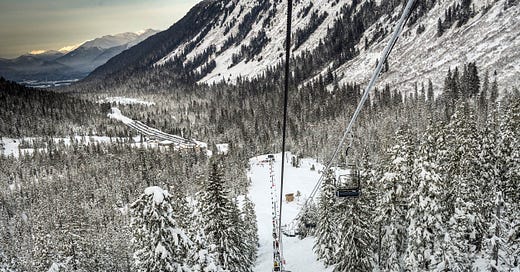



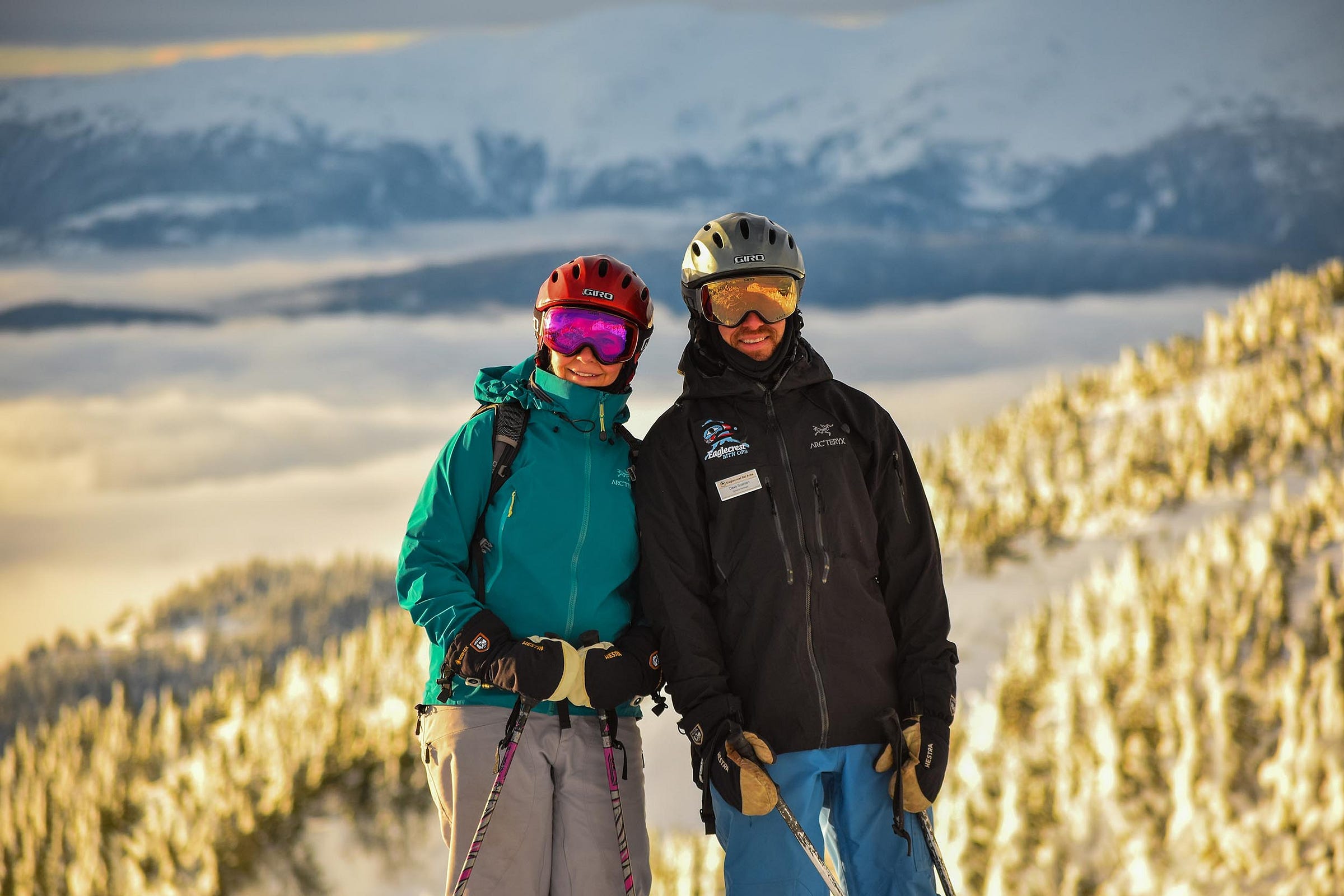



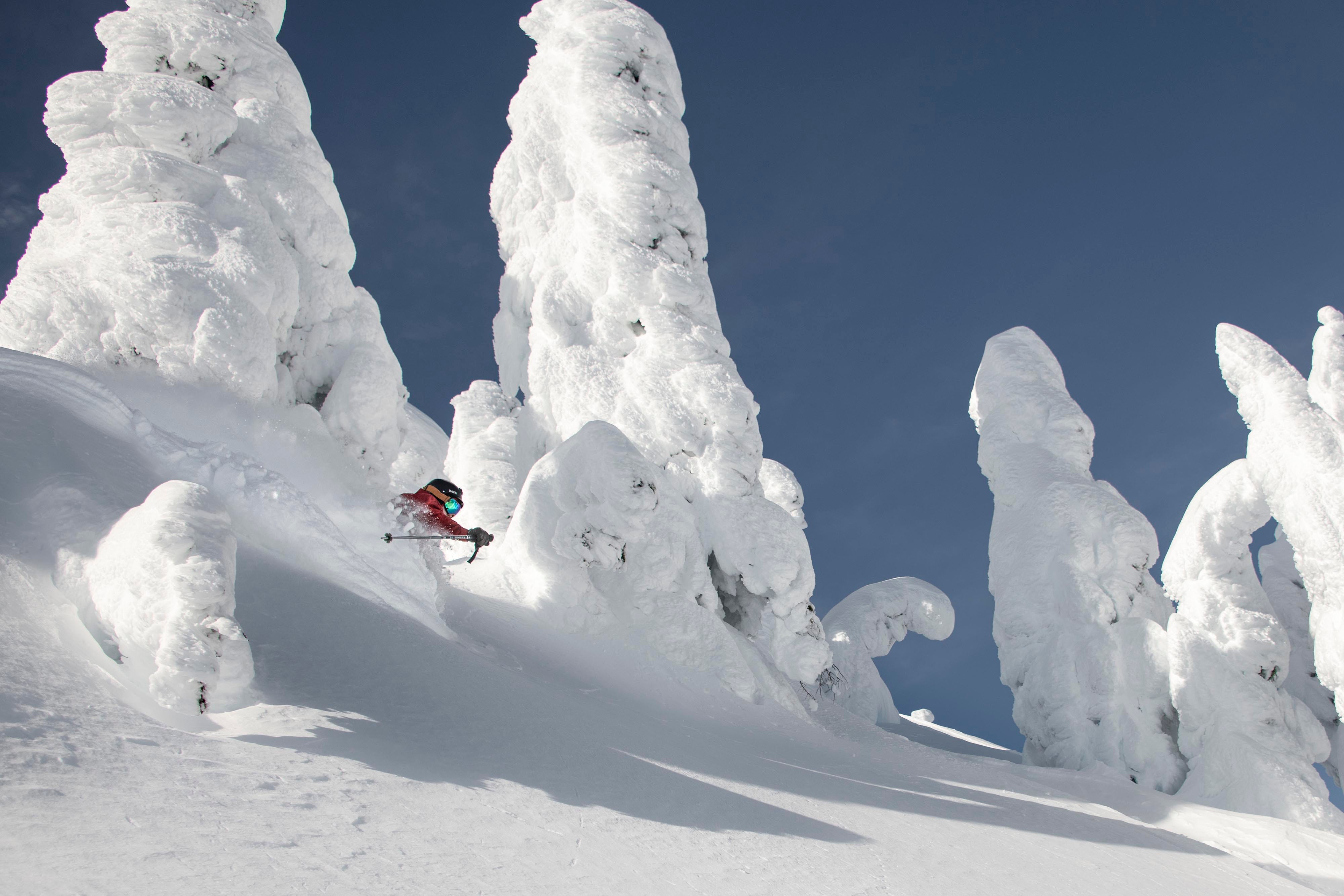

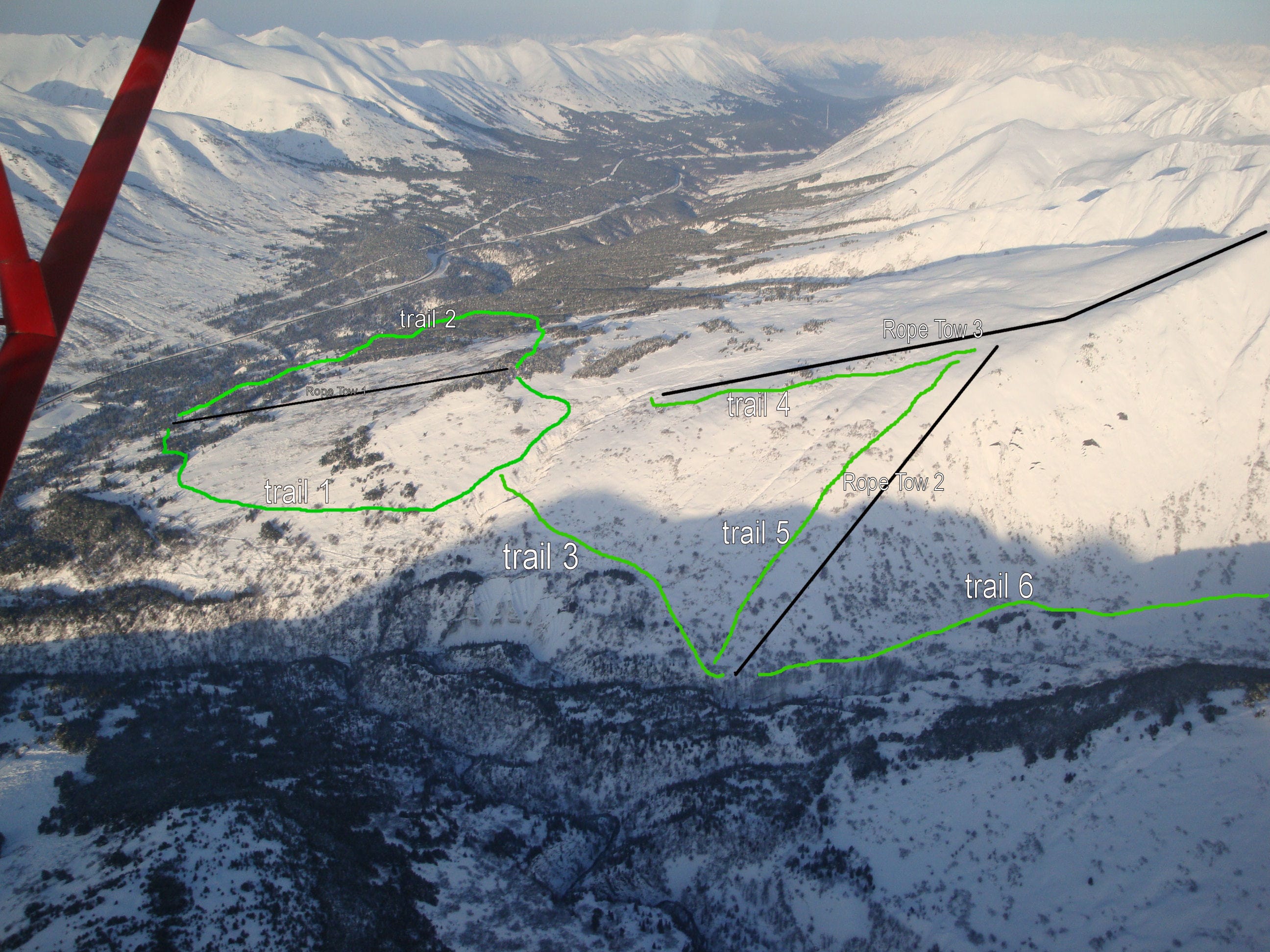
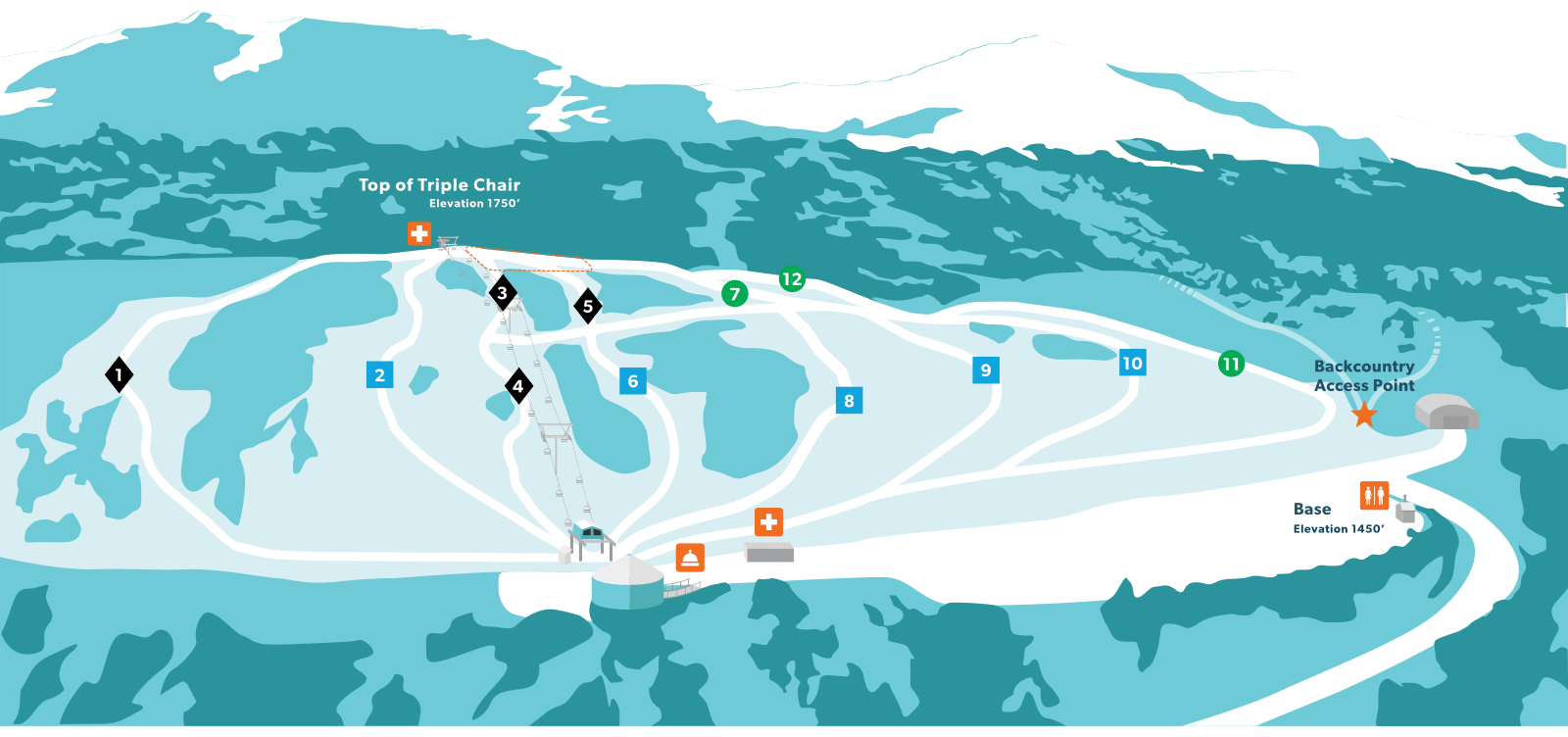
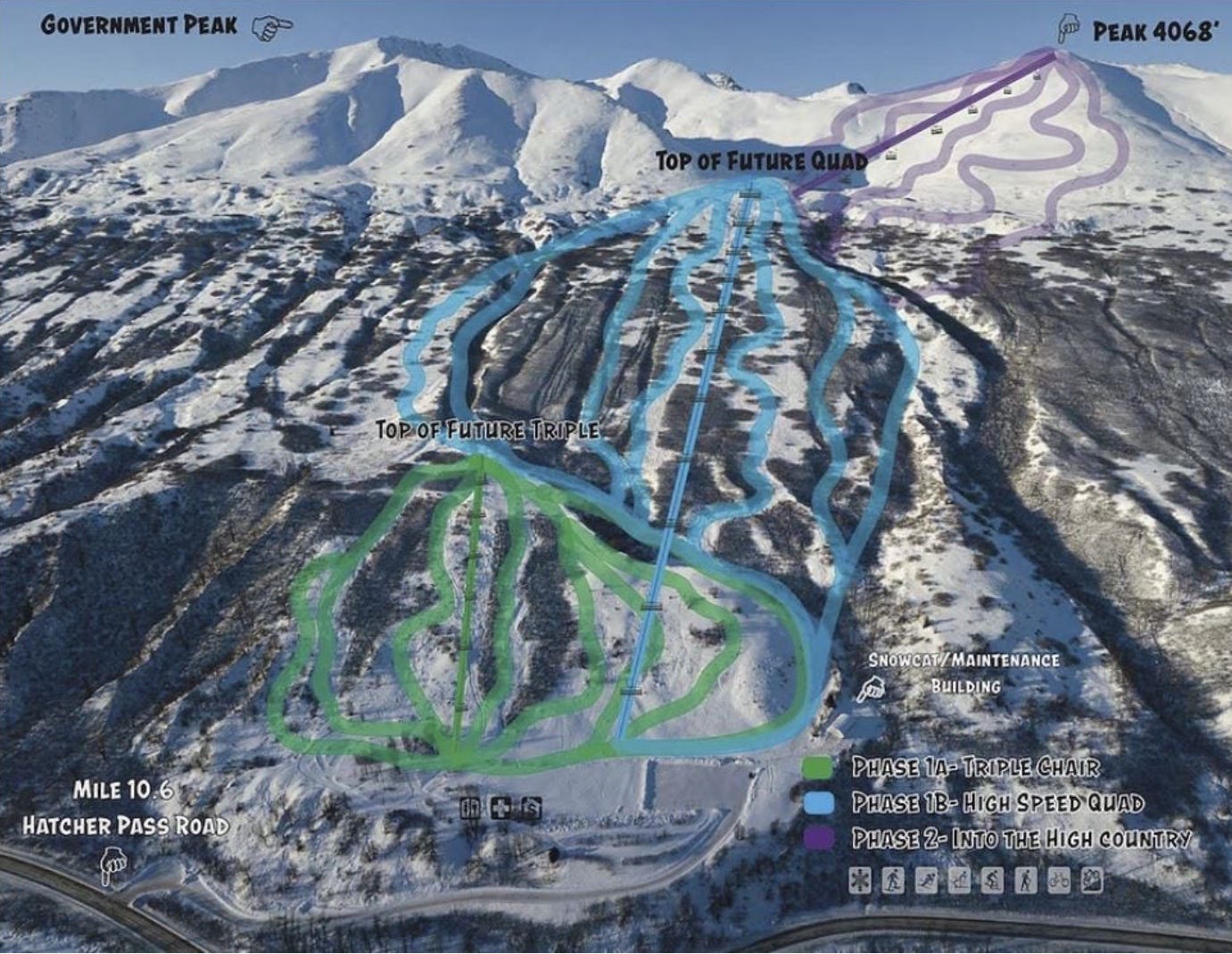
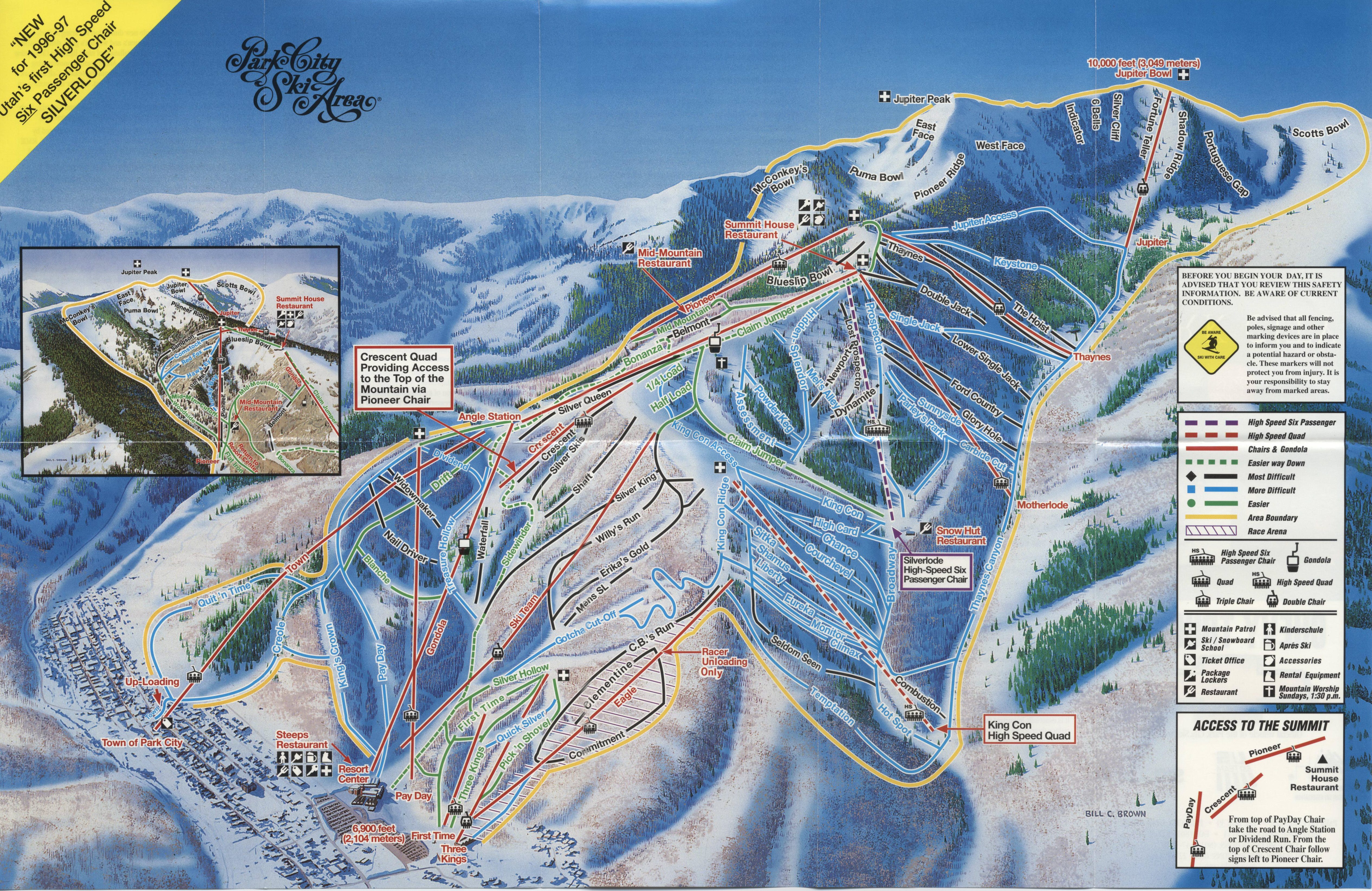









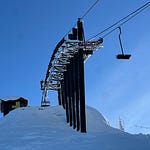


Share this post